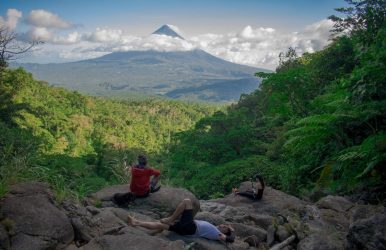Top Places to Visit in Italy on Your Next Travel Escapade
BY Sibashree Dec 13, 2018
Are you a passionate traveler or have you found a life full of exciting thrills? You must explore the places to visit in Italy. With Italy on your traveling bucket list, you should be ready for a gala tour of history, food, art, music, and sacred sites. Further, the villas, colorful villages, and astonishing scenery are elements that make a trip to Italy mesmerizing. It’s time you feed yourself with the knowledge about the places that await their glory. Places To Visit in Italy on Your Next Trip I am always at a loss for words when it comes to describing the mesmerizing beauty of Italy. So, without much ado, let’s know about the places you cannot miss in Italy. 1. Rome “Rome is not built in a day.” One of the best places to visit in Italy, it has amazing vibes for its history as it can be called Europe’s most vibrant city. If you go to this place for the first time, you will discover that it is one of the best decisions that you ever made. Glorious Relics from the Colosseum, Pantheon, Appian Way, and Palatine Hill. All these are included in your package for visiting Rome. It all depends on your personal preferences as a visitor. The enchanting riches of the Vatican are the top attractions of the place. Michelangelo’s Pieta gives you another reason to have a day well spent in Rome. No wonder most visitors end up after spending a day or two in Rome if they have the budget. Breathe fresh in the Borghese gardens and walk down the narrow streets of Trastevere. You will be able to collect the most cherished memories that Rome must deliver. A must-go place to get in touch with the culture and people of this place. Don’t miss out on this destination if you are planning to visit Rome. 2. Florence The Italian Renaissance, Florence is like a giant art museum with excellent architecture that dazzles your eyes. The art museum gives any person who visits this place the best moments in life. It is one of the things you will not want to leave out of your list of places to tour when visiting Italy. The Cathedral of Santa Maria del Fiore is a satisfaction to watch with a gravity-defying massive dome. You will not get such an experience in any other part of the world. It is an exceptional opportunity that you will not want to lose when in Rome. The marble-inlaid bell tower and the incomparable bronze doors by Ghiberti need no introduction to put forward in Renaissance art. All these experiences come your way when you choose to visit Florence. There are several art museums filled with paintings and masterpieces that offer you a visual treat. It is amazing to see the pieces of artwork in Florence. There is so much to explore in Florence that you don’t feel like you are still done with it! The destination should be among the top places you need to visit when going to Italy. 3. Venice You cannot not love a city that has watery streets, where you have boats to accommodate, and love is in the air. This is what you will get on your Venice tour in Italy. So, there is no wonder that Venice is one of the best places to visit in Italy. It is a magical city filled with several tourist destinations. The great Basilica of St. Mark, near the Doge’s Palace, is a definite treat. All this will be part of your experience if you choose to go to Venice when you visit Italy. A Gondolas ride can make you go crazy once you are on the go. Beauty meets culture, a place where you can find the most authentic food to tantalize your taste buds and savor delicacies. Therefore, you will see the beautiful scenery and taste delicious meals in Italy. Which other place will give you the combination of these two worlds? What a pleasure that is to be lost in the pleasures of Venice! Several postcards await you when you tour Venice! Way to Go!! Yes, Venice will give you the best experience ever on your Italy tour. 4. Lake Como The lakes and their beauty are breathtaking, making Italy the most beautiful lake city. No one would like to visit a country without seeing what the lakes have to offer. One thing you need to understand is that Lake Como offers more than an ordinary lake will do. Como can be your favorite summer retreat, and you can definitely pick up Villas in Italy near Lake Como to have a fantastic travel experience. You cannot compare the experience that you get here with any other place in the world. Lake Como has its own uniqueness that makes it stand out. The microclimate of the western shore makes Como bearable, with moderate temperatures even in winter. Therefore, you can still target this place even when you feel like the environment is not conducive. The natural touches can help you choose tranquility over cheer. Quench your travel thirsts by traveling to Lake Como this upcoming New Year! No one has regrets after choosing to visit Lake Como, Italy. 5. The Cinque Terre The top five towns would almost be impossible if there were no railway connections made. After all, how will you move from one place to another without a reliable transportation system? In contemporary times, the trail with cliffs is the only mode of travel. This can be called the most visited tourist attraction in Italy. Therefore, you could be the only one missing the opportunity if you don’t include it on your list. It is one of the most soothing and relaxing places to visit. Cinque Terre is a definite reason to visit Italy once in your lifetime. Beauty attracts all, and why not explore the serene when you have all the beautiful things aligned in a city? This destination is the only reason why some people choose to visit Italy. 6. Amalfi Coast and Capri The high and unlikely Amalfi Peninsula hugs the Mediterranean in the south of Naples is unimaginable for its pill down and dangerous steep slopes. However, the site is amazing, especially if you are experiencing it for the first time. Streets can be called stairways, and houses surrounded with colorful natural decorators add more beauty to them. It is quite amazing to stare at these landscapes and watch what they have to offer. Flowers and beaches amidst the emerald water are sure to soothe your mind, body, and soul. The Amalfi Drive is one of the world’s greatest scenic routes. Lavish villas and lush green gardens add zeal to your travels. All these features will keep you watching for an extended period. No wonder we have a non-countable number of visitors who get to this destination every year. Conclusion Travel enthusiasts find the places to visit in Italy to be the full package of history, culture, customs, and sites that feed their hunger for aesthetics. It’s time for you to be in this land of lakes, castles, and delicious wines. Doesn’t the idea sound just perfect? What is the one destination in Italy that you want to visit the most? Don’t forget to share your thoughts with us! Read Also: Travel Tips to Help You Out In Asia Budget-friendly travel ideas in Australia Dubai Travel Package Deals – Important Things to Know












